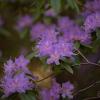August 21, 2009 - 7:21am
Vancouver Island University is preparing to host two prestigious international events: the World Sturgeon Conservation Society’s North American conference in 2011, and the 7th International Sturgeon Symposium in 2013.
A delegation from VIU and the City of Nanaimo will travel to Wuhan, China this fall to accept the winning bid to host the international symposium. The five-day conference will draw in over 500 educators, researchers, environmentalists, and sturgeon enthusiasts from around the world.
“This conference happens only once every four years,” said VIU President Ralph Nilson. “The international attention brought to VIU as a result of the conference bid will be significant.”
The conference will be held in facilities at VIU and at the Vancouver Island Conference Centre in downtown Nanaimo.
“We are working with Snuneymuxw First Nations to have them involved and with city officials,” said Mark Noyon, Chair of VIU’s Fisheries and Aquaculture department. “This will be a very prestigious event and we’re very excited about being selected to host it.”
Noyon anticipates VIU’s new $5.2-million International Centre for Sturgeon Studies (ICSS) will be completed by next fall, adding that it will make a perfect backdrop for the upcoming international events.
Plans for the world class sturgeon research centre at the Nanaimo campus have been underway since 2004. Julie Keenan, Development Manager for the Development and Alumni Office, said 70 percent of the $5.2-million needed to build the Centre has been raised, including $1.6-million each from the B.C. Knowledge Development Fund (BCKDF) and the Canada Foundation for Innovation (CFI). “We’re putting together a high profile team to raise additional funds,” she said.
Researchers working in ICSS will address the conservation and protection of sturgeon species worldwide, and investigate the viability of environmentally responsible sturgeon aquaculture through land-based, closed containment facilities in BC and across Canada.
The ICSS will include state-of-the-art fish holding facilities, fresh water recirculation technology, three wet laboratories, a dry lab for sample processing and analysis, and lab equipment for specialized research in environmental physiology, forensic, nutrition, health, reproduction and genetic research.
Sturgeon present an under-utilized economic opportunity in BC, and have the potential to bring together industry, conservationists, researchers and communities in a fruitful and sustainable way, Noyon added.
Sturgeon eggs, known as true caviar, are a gourmet delicacy, and sturgeon fillets are widely prized. The caviar industry worldwide generates some $100-million in annual sales, making it one of the world’s most valuable wildlife resources.
Overfishing, poaching, pollution and habitat loss have devastated wild sturgeon stocks around the world. Most species are endangered or threatened, and are listed by CITES (the Convention on International Trade of Endangered Species), and in Canada by SARA (the Species At Risk Act).
According to Noyon, the World Sturgeon Conservation Society has identified a need for a dedicated sturgeon research centre in North America. Building the centre in Nanaimo makes sense because VIU has been a leader in sturgeon research in B.C. for over 20 years.
VIU is the only academic institution in western Canada to have captive white sturgeon broodstock - fish old enough to spawn. In 1991, researchers successfully conducted the first-ever captive spawning of Fraser River white sturgeon. In 2000, 2001 and 2004, Malaspina provided fertilized eggs and fry for the start-up of B.C.’s only commercial white sturgeon culture operation in Sechelt, BC.
Nilson said the ICSS “will provide valuable training opportunities for faculty and students, and significantly expand our knowledge about sturgeon at regional, provincial, national and international levels.”
-30-
BACKGROUNDER - Key facts about Sturgeon:
· Sturgeon are prehistoric fish, often called living fossils. They are the largest freshwater fish in the world, and date back to the Jurassic period over 200 million years ago.
· Sturgeon can live for 150 years, but only live in the northern hemisphere.
· Almost all of the world’s 28 species or subspecies of sturgeon are endangered, threatened or near extinction. Poaching, pollution, overfishing and loss of habitat threaten their survival.
· Nine species of sturgeon are found in North America, including five in Canada and two on the Pacific Coast - green sturgeon and white sturgeon. In BC, white sturgeon live in the Fraser and Columbia river systems, with the largest populations in the lower Fraser River.
· BC white sturgeon are being considered for endangered species status under the federal government’s Species at Risk Act.
· The biggest species in the world is the Beluga sturgeon found in the Caspian Sea in Iran. They can grow to 26 feet in length and weigh over 3,000 pounds.
· The white sturgeon, found in North America (including BC) can grow to over 19 feet and weigh over 1,700 pounds.
· It is widely believed that the very large (1,000 pound-and-over specimens) have been fished out.
· In 1897, a white sturgeon was landed in New Westminster, weighing 1,384 pounds, possibly one of the last of the big fish in the Fraser River.
· Although they look like sharks, sturgeon are not related to sharks at all.
· Sturgeon have five rows of bony plates called "scutes" running down their body, and four "barebells" or whiskers hanging down in front of their mouth.
· Sturgeon do not have any teeth, and feed mostly on fish, dead or alive.
· Sturgeon eggs, known as true caviar, are a gourmet delicacy, and sturgeon fillets are widely prized. The caviar industry worldwide generates some $100-million in annual sales, making it one of the world’s most valuable wildlife resources. The most expensive caviar comes from the Beluga sturgeon.
· In BC, white sturgeon provide a catch and release sport fishery worth $15-million annually in the lower Fraser River.
· In the United Kingdom, sturgeon are known as the "Royal Fish." According to medieval law, anyone who catches a sturgeon must present it to the Queen.
· California has developed a multi-million dollar commercial sturgeon farming industry for both meat and caviar, due largely to the efforts of researchers at the University of California, Davis.
· Sturgeon farms are considered by ecology and conservation-minded organizations such as the Monterey Bay Aquarium to offer an eco-friendly alternative because the closed containment farming methods do not pollute local water or reduce wild stocks.
Tags: In the Community






